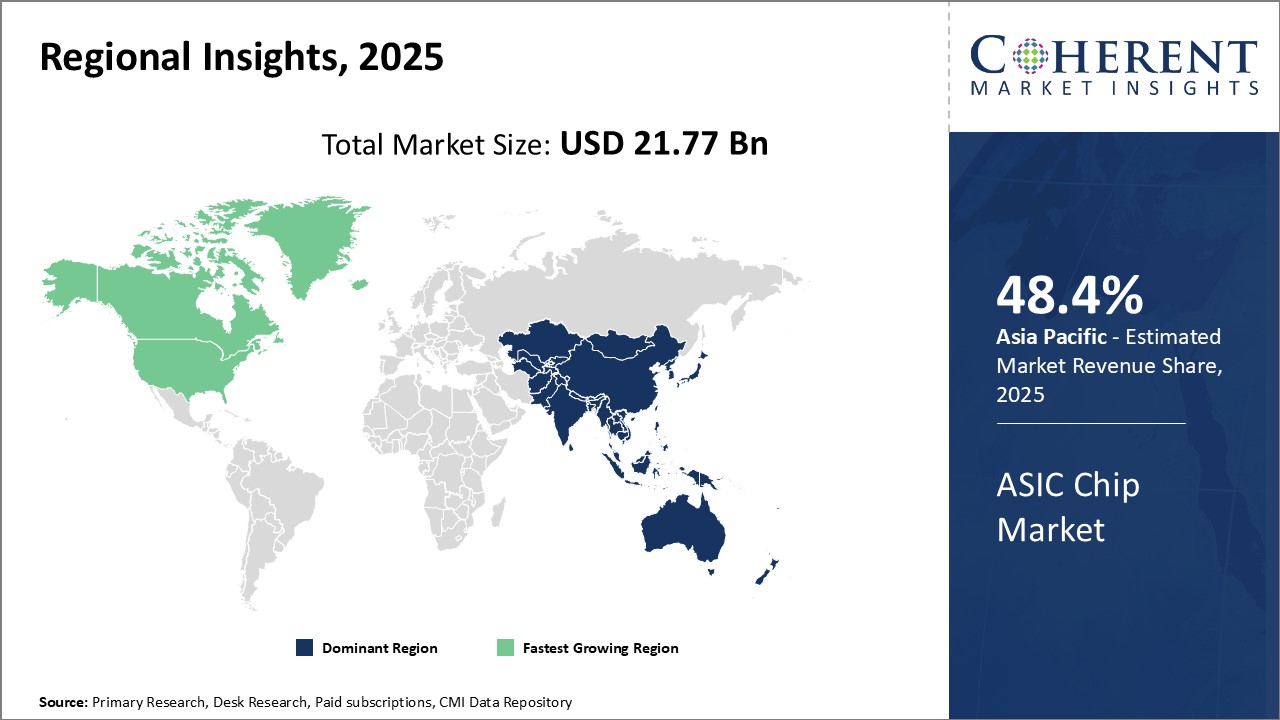
To learn more about this report, Request sample copy
In 2025, the ASIC chip market is set for significant advancements, with the Asia Pacific region leading the forefront in both market share and growth rate. Asia Pacific is anticipated to dominate the market share, holding a commanding 48.4% share among all other regions. This dominance can be attributed to the region's well-established manufacturing ecosystem, particularly in countries like China, Taiwan, South Korea, and Japan, which serve as major hubs for semiconductor production. Moreover, Asia Pacific is expected to exhibit the highest Compound Annual Growth Rate (CAGR) of 9.67% in 2025 compared to all other regions. This robust growth trajectory is fueled by increasing demand for consumer electronics, automotive electronics, and the rapid adoption of emerging technologies such as 5G, artificial intelligence (AI), and Internet of Things (IoT). Furthermore, supportive government policies and substantial investments in semiconductor infrastructure further bolster Asia Pacific's accelerated expansion in the ASIC chip market.
While Asia Pacific leads the charge, other regions also play significant roles in shaping the ASIC chip market landscape. In North America, encompassing the U.S. and Canada, the market share remains substantial, propelled by leading semiconductor companies, advanced technological innovation, and high demand across various sectors including data centers, networking, and automotive electronics. However, the growth rate in North America might be comparatively lower than that of Asia Pacific, influenced by factors such as market saturation and geopolitical uncertainties.
Europe maintains a moderate presence in the ASIC chip market, with countries like Germany, the U.K., and France contributing to its market share. The region is anticipated to witness steady growth, driven by investments in research and development, automotive electronics, and industrial automation applications. In Latin America, while the market share is smaller due to economic challenges and lower technological adoption rates, gradual growth is expected supported by digitization efforts and telecommunications infrastructure expansion. Similarly, the Middle East and Africa (MEA) region, with modest market share, may experience moderate growth propelled by infrastructure development and digital transformation initiatives.
In summary, while Asia Pacific dominates the ASIC chip market both in terms of market share and growth rate in 2024, other regions such as North America, Europe, Latin America, and the Middle East and Africa also contribute to the market's dynamic landscape, each influenced by regional-specific factors and growth drivers.
Joining thousands of companies around the world committed to making the Excellent Business Solutions.
View All Our Clients